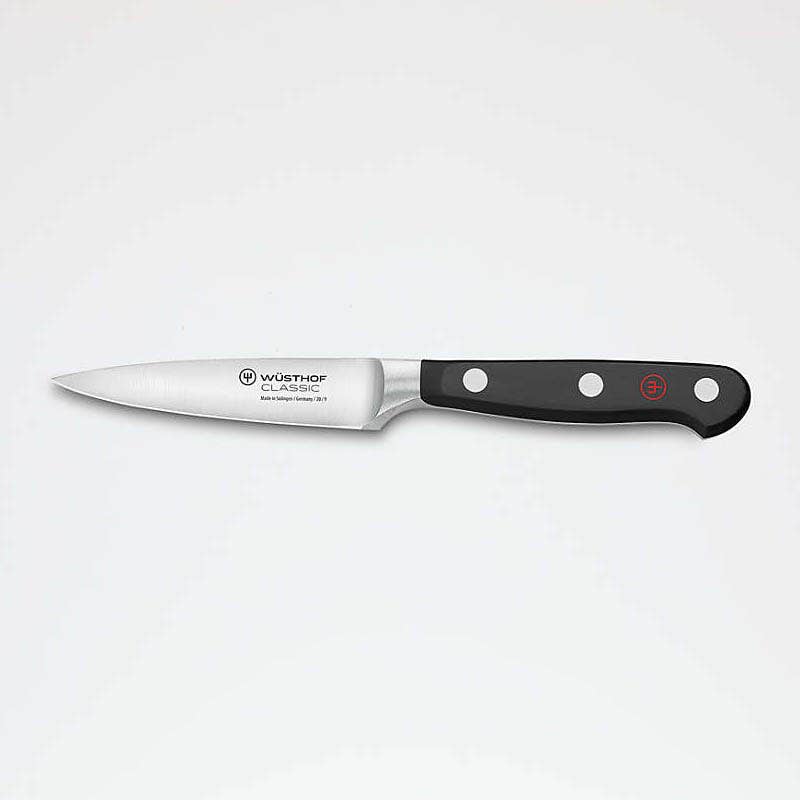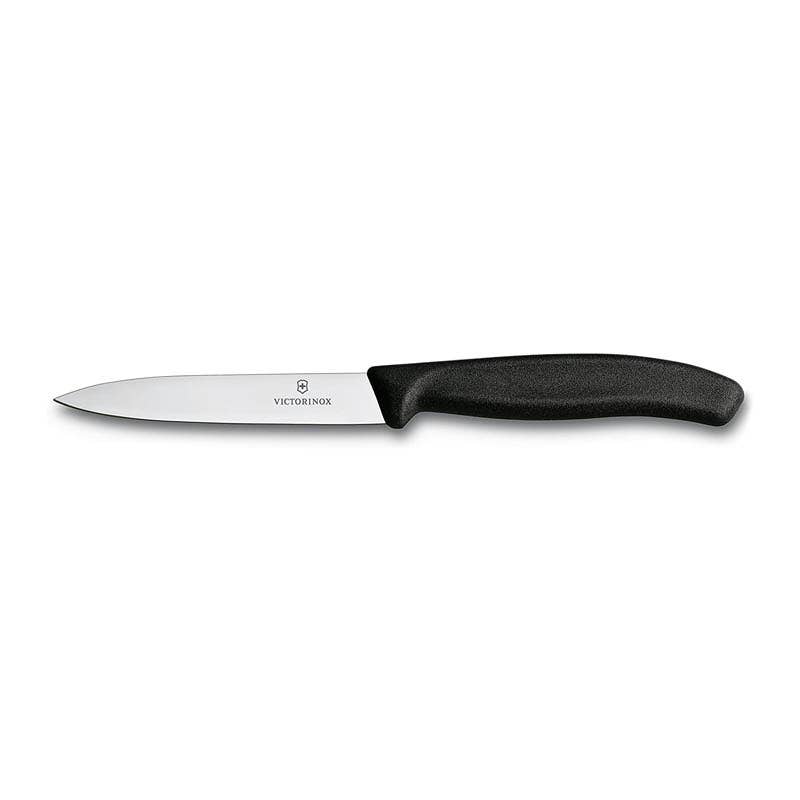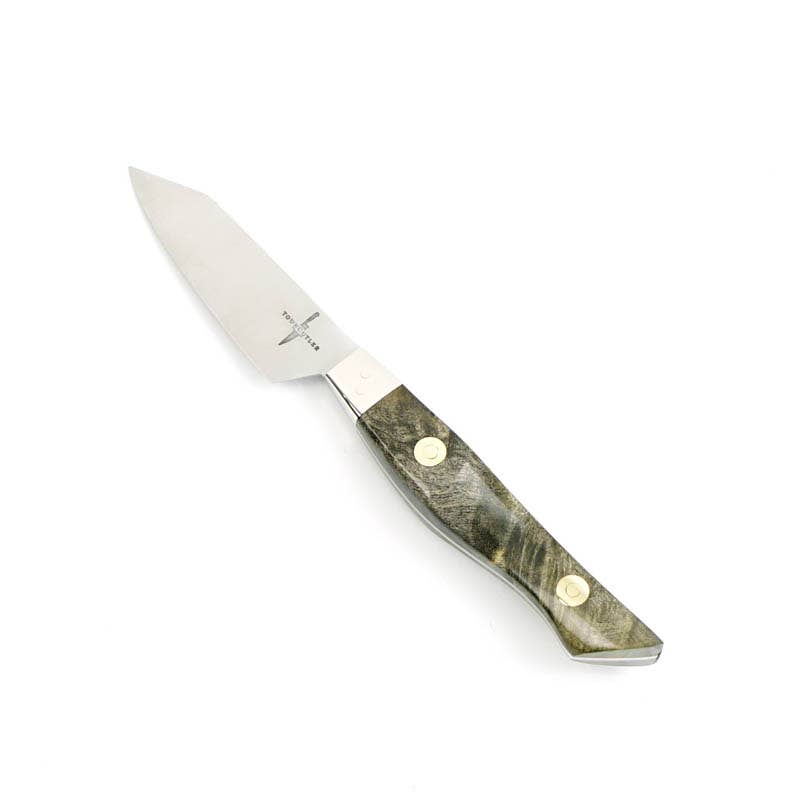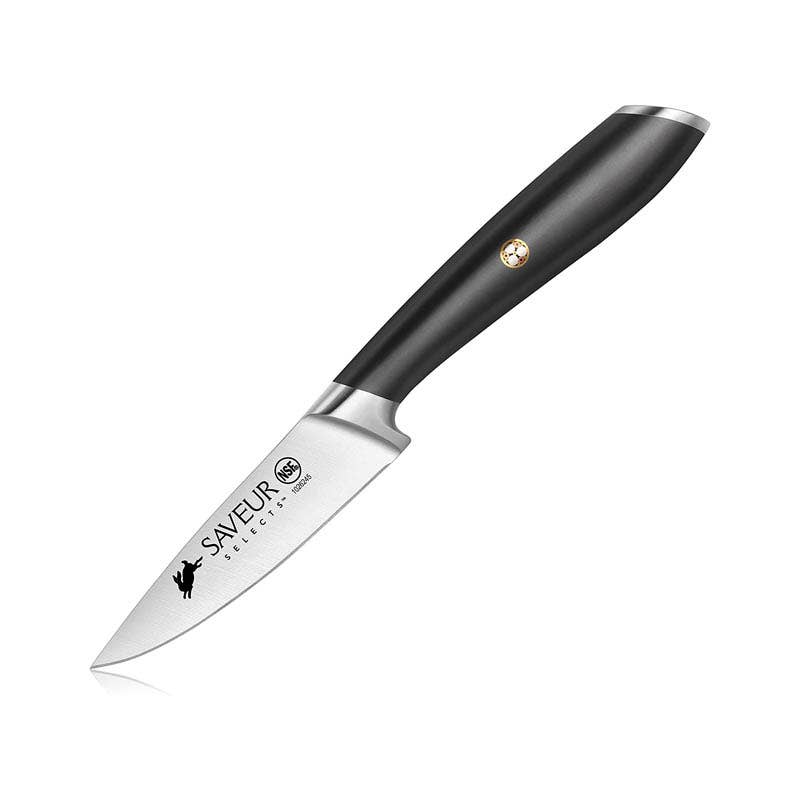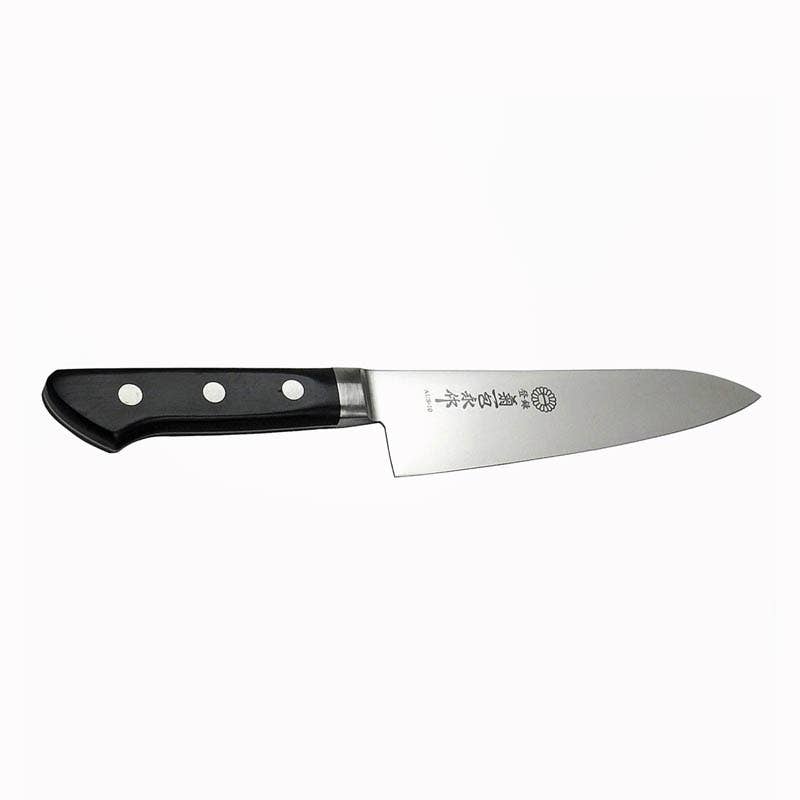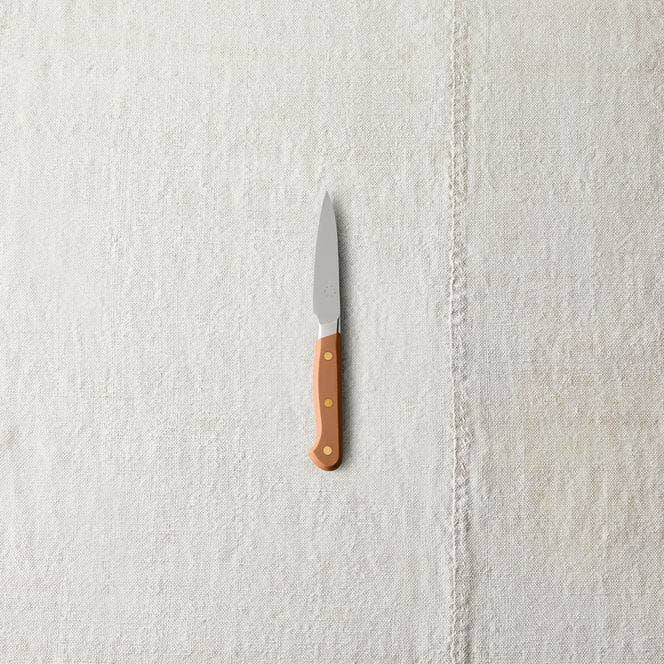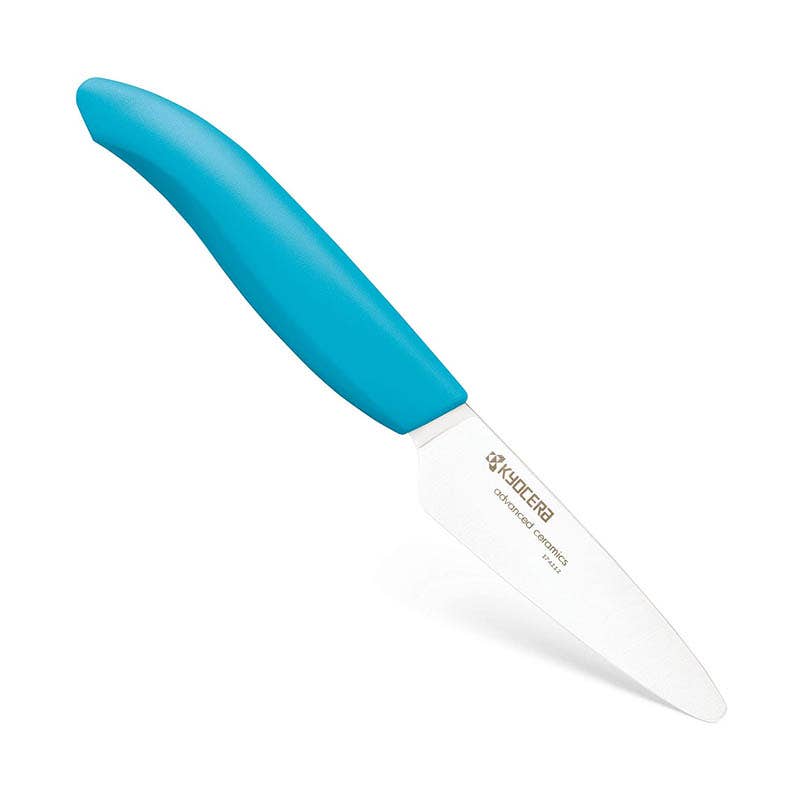These 7 Best Paring Knives Get Straight to the Point
Your kitchen’s MVP for tiny tasks.
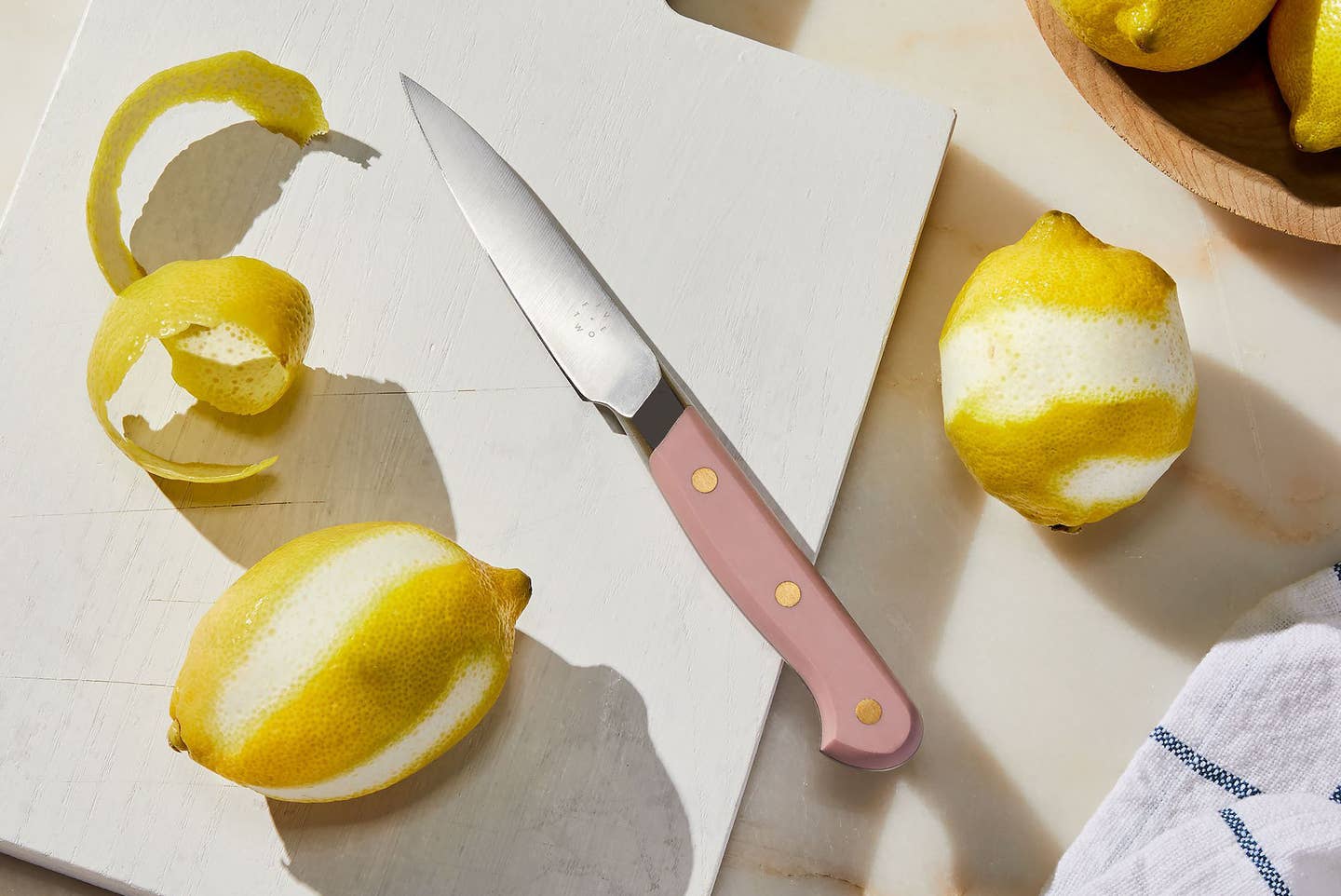
Paring knives are the underrated kitchen workhorses that make easy work of tiny tasks like peeling apples, deveining shrimp, and segmenting citrus. The best ones feel comfortable to hold and effortless to maneuver, and are as graceful as they are strong.
While chef’s knives perform their best when used on a cutting board, “paring knives are intended to be used in your hands,” explains Elan Wenzel, founder and owner of Colorado’s Element Knife Company. “While you certainly can use a paring knife on a cutting board, it’s difficult with the claw technique”—a classic chef’s maneuver where you tuck your fingertips and use your knuckle to help guide the blade. “There’s just not enough room to move the knife comfortably or safely.” A good grip is key to a safe and effective paring knife.
Ranging anywhere from 2.5 to 4 inches long, a paring knife can handle most—if not all—of your detail-oriented kitchen tasks. Use them to peel or slice small fruits and vegetables, hull strawberries, remove seeds and cores from tomatoes and cucumbers, loosen cakes from their pans, and even test the doneness of meat. With the right paring knife in your life, you’ll find new uses for it every time you step into the kitchen. Here are seven excellent models you’ll use again and again.
- Best Overall: Wüsthof Classic Paring Knife
- Best Value: Victorinox Swiss Classic Paring Knife
- Best Splurge: Town Cutler Paring Classic
- Best for Precision: Saveur Selects German Steel Forged Paring Knife
- Best Japanese: Kikuichi Cutlery Petty Knife
- Best Comfy Grip: Food52 Five Two Essential Paring Knife
- Best Ceramic: Kyocera Advanced Ceramic Revolution Series Paring Knife
Features to Keep in Mind When Shopping for a Paring Knife
Blade Style
Paring knives come in quite a few shapes and styles, with the spear point being the most common and most versatile. Both sides of the blade curve toward one another to create a sharp point, which is ideal for most kitchen tasks.
The bird’s beak knife, sometimes called a tourné knife, has a blade that curves downward like—you guessed it—the beak of a bird. If you’re going for some fancy knifework (like carving a rose from a tomato, or a seven-sided barrel from a root veggie), the bird’s beak is your friend. It’s less common than its spear-point cousins, its curved blade makes it especially effective for use on round items.
Sheepsfoot knives have a blunt tip and straight-edged blade for maximum cutting contact with food. Originally used by farmers and sailors, the blunt tip made it easier to avoid any accidental puncture wounds while out at work. Many pocket knives feature sheepsfoot blades, but you’ll find paring knives in this style, too.
Finally, petty knives, the Japanese cousin of the European paring knife, tend to be a bit longer than the average paring knife. “A petty knife is usually 4 to 6 inches,” says Wenzel. “The name comes from the French word petite,” referring to a smaller version of the Japanese chef's knife, the gyuto.
Blade Material
Stainless steel is an excellent choice for a paring knife, making for an incredibly sharp but also low maintenance blade. Carbon steel blades, which require a bit more upkeep to prevent rust, are often the choice of professional chefs, as they’re sharper than stainless when freshly sharpened, and stay sharp for longer. Ceramic blades are made from zirconium oxide, also called zirconia, which is significantly stronger than stainless steel or carbon steel. That said, ceramic blades can be brittle, so avoid bending or twisting the blade to prevent it from breaking.
Handle
“Knives are a very personal thing,” says Wenzel, and one of the most crucial parts of choosing a good knife is making sure that using it is a comfortable experience. If possible, he suggests heading to a local cutlery shop: “Our body mechanics are all different—our hand size, how our fingers wrap around the handle, and how a knife feels in our hand.”
Weight
Because paring knives are used for in-hand cutting, a lightweight model makes all the difference. Balance is also key. In a chef’s knife, you typically want the blade and handle to be equally balanced, but in a paring knife, a heavier handle means better control.
Our Top Picks
Best Overall: Wüsthof Classic Paring Knife
Forged from a single piece of high-carbon steel, this paring knife comes from German manufacturer Wüsthof, makers of some of the world's finest cutlery since 1814. With sleek design and precision balance, this tool offers great maneuverability and a high level of control with its triple-riveted handle. Its cutting edge is laser-controlled and tested for sharpness and uniformity. Reviewers rave about the knife’s grace and durability.
Best Value: Victorinox Swiss Classic Paring Knife
With over 6,000 five-star reviews and a price tag under $10, we can’t think of a reason not to own this super sharp knife. It’s not especially pretty, but there’s a utilitarian beauty in its multipurpose straight edge that garnishes, dices, and minces with ease—and stays razor sharp for a surprisingly long time. Victorinox has been crafting knives in Switzerland since 1884, and this one has an ergonomically designed handle with great grip.
Best Splurge: Town Cutler Paring Classic
Town Cutler makes high-end, elegant knives by hand in Reno, Nevada. This paring knife is a stunner, with a gorgeous buckeye burl handle and stainless-steel blade that features a drop point to allow for precision work. Make sure you wash and dry it promptly by hand to keep the knife in tip-top shape. It’s worth a little TLC for the superfine edge, superb durability, and ergonomic handle…and did we mention how pretty it is?
Best for Precision: Saveur Selects German Steel Forged Paring Knife
This is a solid paring knife on all accounts, and its small size and top-notch grip makes it ideal for detailed knife work. Saveur Selects’ handcrafted steel knife has a comfy arch-shaped handle that rests easily in the hand for the security you need for the most delicate kitchen tasks.
Best Japanese: Kikuichi Cutlery Petty Knife
Handcrafted with high-carbon molybdenum and vanadium, the Kikuichi Cutlery petty knife has a thin yet exceptionally strong blade. The handsome resin handle is comfortable, durable, and heat resistant. Based in Nara, Japan, Kikuichi Cutlery has been producing handmade Japanese blades for over 750 years.
Best Comfy Grip: Food52 Five Two Essential Paring Knife
Domino’s Commerce Content Director Sophie Miura reaches for this paring knife “when I'm prepping ingredients in autopilot mode, which, to me, is the ultimate test,” she says. She loves “the curved grip that contours perfectly to my small hand, heavy-but-not-too-heavy forged Japanese steel, and the classic dove gray handle with brass rivets.” The handle also comes in colors like rhubarb and Nordic Sea (a deep blue), so they’re as pretty as they are comfortable.
Best Ceramic: Kyocera Advanced Ceramic Revolution Series Paring Knife
Ceramic knives tend to be affordable, lightweight, and spectacularly sharp. This 3-inch Kyocera paring knife is a great example. Made in Japan, it holds its ultra-sharp edge up to ten times longer than steel, and it’s nearly featherweight—perfect for clean, precise cuts. Bonus: It comes in fun colors, from cheerful blue to bubblegum pink.
Ask the Experts
What’s the difference between a paring knife and a chef’s knife?
A chef's knife is a great multi-tasker, but for delicate work like de-seeding peppers and coring tomatoes, a smaller, nimble paring knife is your best friend. Invest in both for a well-equipped kitchen.
What’s the best size for a paring knife?
That’s entirely up to you. “If the knife feels like an extension of your hand, it’s the right knife for you,” notes Wenzel. If you’ve got smaller hands, look for a knife on the smaller side, and vice versa if you have larger hands. Nothing beats testing out the grip in a good cutlery shop, though.
How long will my paring knife last?
A good paring knife “should be able to last a lifetime, and even be passed down to the next generation,” says Wenzel. He recommends taking care of it by avoiding the dishwasher, as well as crude tasks like prying open cans or coconuts. (“A paring knife is not a screwdriver!”) Some cooks prefer to have a cheaper option for everyday use, and a more prestigious knife to break out on special occasions.
Keep Reading
Continue to Next Story
